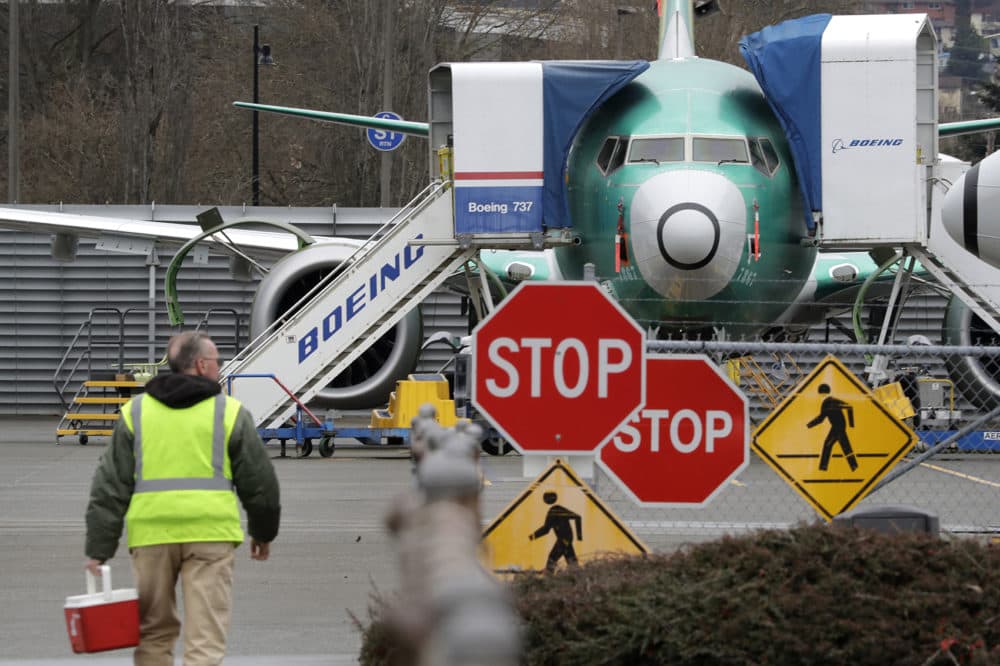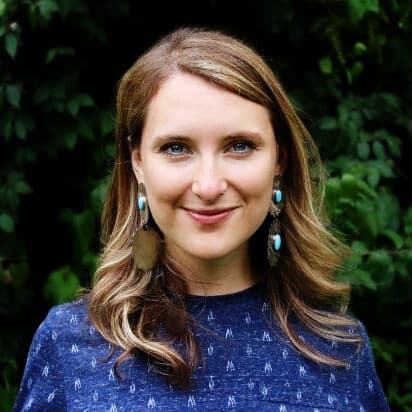Advertisement
The 737 Max and Boeing’s unresolved issues
Resume
After the door plug of an Alaskan Airlines’ Boeing 737 Max-9 blew out in flight earlier this month, the Federal Aviation Administration says it will perform a complete audit of the Max-9’s entire production line.
In this episode from 2020, we hear from a Boeing engineer and an aviation analyst about what’s at the root of the safety issues with the 737 Max, troubling the plane then and now.
Guests
Lori Aratani, transportation reporter for the Washington Post covering airports and airlines. (@loriara)
Cynthia Cole, a test and systems engineer at Boeing for 32 years, until she retired in 2010. Former president of the Society of Professional Engineering Employees in Aerospace (SPEEA).
Leon Grunberg, sociology and anthropology professor emeritus at the University of Puget Sound. Co-author of "Emerging from Turbulence: Boeing and Stories of the American Workplace Today" and "Turbulence: Boeing and the State of American Workers and Managers."
Interview Highlights
When you were working on a system or project — and something got flagged for a bug, or a design flaw — how did Boeing deal with it? What was the process like?
Cynthia Cole: “I had to sign off on paperwork before we flew. And if I wasn't ready, I didn't sign off — and then we had to fix those problems. Most of the time we were so proactive. I mean, my job, I was on call 24 hours a day. I was the mission data expert. And I'd get calls at midnight. I just always left my phone on. And I would get calls at midnight if they were having a problem at shift change, and they needed some expertise. And I mean, we just worked whenever we needed to. And I can tell you, even though we worked wild and crazy hours … we just did it. We didn't have any attitude about it, because the most important thing was having a safe aircraft. And people worked together, and there would be disagreements. Yet, we would hash it out. You know, there was always this atmosphere of, ‘Let's get it to work, let's figure out what's wrong. Let's solve the problems.’”
"People worked together, and there would be disagreements. Yet, we would hash it out. You know, there was always this atmosphere of, ‘Let's get it to work, let's figure out what's wrong. Let's solve the problems.’”
Cynthia Cole
On what would happen if there were safety issues
Cynthia Cole: “I knew my own job, so I knew what I needed to do. And so on the military programs, we had incredible quality control. In fact, if there had ever been any incident on any of those aircraft[s], we would have known every single part — by serial number and part number — of any piece on that aircraft. We had such meticulous records. And so I knew what had to be done, and what was right for my part of the aircraft — and so did the other engineers. And, during those days at the Boeing company … we had process. We had incredible process, incredible procedures. You know, systems engineering at the Boeing company was like no place else I've ever been. And we had to document. If you couldn't document your process, step-by-step, you didn't have a process. And that was one of the things that made the Boeing company so excellent, was the systems engineering. And so we always thought, you know — schedule and cost, any profits and staying on track — that would follow, if you did the job right. The most important thing was doing the job right. And then the profits would come.”
“The most important thing was doing the job right. And then the profits would come.”
Cynthia Cole
On when she saw the company start to change
Cynthia Cole: “It was after the McDonnell Douglas merger. It was during that time. And heritage Boeing engineers — we were shocked. We were appalled. We fought it. I mean, that was part of the reason for our 40-day strike. I was a picket captain, out on the strike. And that was part of the reason the McDonnell Douglas group, in management, they wanted to break our union. And it was really funny because we weren't really known as a strong union until they forced that strike, and we ended up winning.”
What was it about this McDonnell Douglas merger in 1996 and 1997 that changed the company culture at Boeing?
Leon Grunberg: “That’s the key question, I think. As Cynthia mentioned, they brought in a cutthroat culture with a new vision, and a new ethos. The two primary shareholders were John McDonnell, one of the McDonnell Douglas. And Harry Stonecipher, who was the CEO of McDonnell Douglas. So they became the largest shareholders. And essentially a lot of the top executives were imported from McDonnell Douglas. And what's really interesting is that in 2004, Stonecipher then became CEO of Boeing, actually made it very explicit that the intention was to change the culture. He said … that was the intention. ‘So that it’s run’ — this is a quote – ‘So it's run like a business rather than a great engineering [firm].’”
“As a lot of employers told us, the bean-counters, the finance guys, became the dominant people in the company. The ethos was to sort of chase shareholder value about everything. And that became the, sort of, that trickle-down across the whole management ranks. And that became the sort of dominant paradigm. And it led to a whole bunch of effects.”
On how the changes within Boeing impact production today
Leon Grunberg: “I think a good way to see the practical effects of the change is to look at a couple of airline programs, sort of contrast how the Triple 7 was built and launched, and the business model for the 787. And the Triple 7 took five years to build. It was launched in 1995. It was about $5 billion in cost. It's one of the safest planes. They had a ‘working-together’ philosophy that Cynthia has been talking about. They created what were called Design Build Teams, where engineers and manufacturing workers were co-located, so they would discuss problems as they arose from the design, and then the manufacturing aspects. And, apparently – amazingly — with 10,000 people working on that program. Alan Mulally, who was the head of that program, would bring altogether the 10,000 people that worked on that program three or four times a year, to avoid sort of silos; that people could talk and communicate to each other.
“And you contrast that with the 787, which was a new plane, the Dreamliner, was launched. Well, that was initially designed in 2003. That took eight years. It was over three years late. At this point, I think at one point, it was like $32 billion. Way over cost, overruns. It had a grounding of a few months because of battery problems. … Why did that happen? Why was the 787 business model a sort of flawed model? [It] was that Boeing completely outsourced a lot of the key parts of the plane, including wings. Which were, as one general manager told us, were the crown jewels of the Boeing production line. And so they start to outsource a lot of stuff to subcontractors. And they lost what they call configuration control of the supply chain. And they did that partly to try and minimize costs and to share risks with the subcontractors, with these partners. And of course the sad irony is — as I've just said — the decision to do that, to minimize risk and minimize cost, ended up doing exactly the opposite. You had huge cost overruns, and delays and a lot of risk in the building of the plane. And that's something you see developed with the 737 Max, too.”
“The decision ... to minimize risk and minimize cost ended up doing exactly the opposite. You had huge cost overruns, and delays and a lot of risk in the building of the plane.”
Leon Grunberg

